Using nuraphone Headphones for Film Editing
- Can you use nuraphone headphones for film editing?
- How do nuraphone headphones sound?
- Are nuraphone headphones comfortable?
Last updated: November 2020
nuraphone headphones promise something pretty revolutionary. A chance to create your own personalised listening profile, which will calibrate the nuraphones to ensure you are hearing your favourite music in all the depth, clarity and range that you should be.
They do this by ‘listening’ to the sound of year ears, by playing in various tones and frequencies and then registering the Otoacoustic response using incredibly sensitive built-in microphones to pick up sounds 10,000 times quieter than those that went in. This profile is then used to calibrate the nuraphones to fit how your ears hear sound.
I’ve been excited to review these headphones ever since the phenomenally successful Kickstarter campaign in 2016, because they promised to deliver something new; a uniquely transformative listening experience that will make you fall in love with music all over again.
They’ve also been really highly reviewed by many of the big tech/music sites and recently won the CES 2018 award for Best Innovation.
And, as a film editor, I wanted to know if these headphones might deliver a superior mastering environment. One where I wouldn’t be compensating for deficiencies in my own hearing in my sound mix. Can they deliver a ‘truer’ sound, one that is useful for post production professionals?
Before we dive in just a quick to note to you, dear reader to be sure to make it all the way down to the bottom of the post to discover 5 things I learned while chatting with nura’s CEO Dragan Petrovic. Most importantly this includes the fact that there are some great new firmware updates coming in June 2018 for nuraphone owners.
5 Things I learned about nuraphone headphones
During the course of putting this review together I learned the following interesting things:
- nuraphone is the most successful Australian Kickstarter campaign ever, raising $1.8 million of $100,000 goal.
- Your left and right ears hear sound differently but your brain automatically adjust for this.
- NASA are apparently using nuraphone technology in their 2020 mission to Mars.
- The shape of the profile: “Low notes at 12 o’clock and higher notes as the dial travels clockwise. The further away from the centre, the more sensitive you are to those frequencies.“
- nura headphones use Aptx bluetooth technology for improved wireless sound quality.
Save 10% on nuraphones!
If by the end of this review you want to buy a pair of nuraphone headphones, save 10% with this referral link.
Otherwise you can check them out on Amazon.com, available on Prime, but you won’t be able to save 10% unless you buy through nura with the link above!
The nuraphone promo video, created by The Mill.
nuraphone Subscription Service – NuraNow
nuraphone continues to shake things up for the headphone industry by offering ‘a ground breaking subscription service for it’s award winning nuraphones‘ in which you can pay for them at a low monthly price and get a bunch of additional benefits thrown in too.
For as little as £12/$9 a month, you can get your hands on a set of these headphones and after 24 months you’ll own them out right. You must now maintain your subscription to keep the nuraphones you receive, otherwise they will be remotely deactivated.
Plus during that time nura will replace your nuraphones if they’re broken, lost or stolen for free!
Members are entitled to one repair or replacement in cases of accidental loss, damage, or theft per two years of membership. For any additional accidentally damaged or lost devices, the member is eligible to purchase a replacement device at half the retail price.
Additional benefits include access to exclusive monthly offers from nuraphone and its partners, competitions and an analogue cable worth £14.95, if you choose not to listen wirelessly.
You’re also free to leave the contract at any time, as long as you ship the nuraphone’s back to HQ within 30 days.
NuraNow is available in the UK, US and Australia.
If you’re not convinced yet, have a read through the rest of this post and my interview with nuraphone’s CEO to find out for yourself, what the fuss is all about.
Check out all the details and sign up at nuraphone.com
nuraphone’s just got better – G2 Update
One of the big things that attracted me to nuraphone, other than the incredible sound, was the fact that they always planned to update the headphones ‘over-the-air’ through firmware updates. That time has come with the first update called G2.
This brings with it a fistful of improvements including:
- Active Noise Cancellation
- Social Mode
- Double tap adds more functions to the controls
- Bluetooth QuickSwitch
- Spoken Battery Indicator
- Improved voice call quality
You can learn more about the specifics of the G2 update here.
The social mode allows sound to come through the microphones on the outside of the headphones, which means you can easily talk to people without taking them off, which makes a great double use of the technology behind the ANC.
The Active Noise Cancellation is a huge boost to the nuraphones, which were previously only ‘noise isolating’ and works in the following way:
The nuraphones ANC works solely with noise cancellation frequencies played through the ear cup speakers. This leaves the inner ear tip to play high notes and melodies without interference and allows the ANC to block out ambient noise around you.
ANC is enabled by default in your personalised hearing profile, immediately after personalisation.
The bluetooth Quickswitch offers this functionality:
Within the first two minutes of popping your nuraphones on your head, they will be in discoverable mode and so you can swap between your phone, computer and more while listening – without having to disconnect from any previously paired devices.
Applying the G2 update takes about 25 minutes through the app, which itself seemed to function better for me – post update, and a couple of taps. It’s very easy.
The ANC is extremely good, and did a great job of removing the noise of a rotating floor-fan in my office. It’s hard to say how this would compare to something like the Bose QuietComfort 35’s which are a close competitor to nura.
Having two more virtual buttons through the addition of double tap was great (maybe a long press will come?) as I can now control the volume of the music remotely, having personally added Volume up and Volume down, to either side.
Updates and new features like these (and hopefully more to come in the future!) make the initial investment in nuraphones all the more worthwhile. Plus they still sound amazing!
Save 10% off your first pair of nuraphones with this referral link.
nuraphone Headphones: A Film Editor’s Review
In setting out to review the nuraphone headphones I had two burning questions in mind:
- Do they deliver a sound worth paying £349/$399 for?
- Can I use these for film editing?
I’ll answer these questions, and a whole bunch more in the following review. But from the outset I want to highlight how much I enjoyed listening to music on these headphones.
They simply sound amazing and if you ever get to try some in person, do it. The first time I put them on I ended up using them for four hours straight. I was hooked.
I put together this YouTube playlist during those first few hours of listening with nuraphone headphones.
The point of some of these tracks was to hear a great tonal range (like the first track from Alexandre Desplat’s superb soundtrack for Birth), extreme bass or just some really great tracks.
I also wanted to test how they sounded across different genres and artists. Why not listen along while you read through this post!
You can also check out this previous post for a list of all my favourite soundtracks to work to.
nuraphone set up and first impressions
The first thing you notice picking up the nuraphones is a) their weight (325 g) and b) how good they feel.
Made entirely from metal and silicone they feel great in your hand and on your head. The weight presumably derives mostly from the complex technology inside the earpieces, rather than the aluminium itself.
Either way they feel robust, polished and premium.
The second thing you notice is how clean the aesthetic is.
In picking them up for the first time, I looked for the little L – R, to know how to put them on, but there isn’t one. Outside of the logo and the word ‘nura’, the headphones are entirely clean.
You just need to know that the cable port goes on the right hand-side.
Setting up the headphones via the well-crafted nura phone app, is a simple experience and voice-led. The narrator guides you through fitting the headphones to your head and ears to ensure a snug fit for the calibration test.
This was a bit fiddly for me and for ages I couldn’t get two ticks to appear during the calibration set up process. In the end I just jammed my hand over my left ear to press it in and I finally got two ticks.
I wonder if some of my niggles are from the pair I had being a much used demo unit, but I’m not sure.
During the calibration process you hear a set of cyclical tones and beeps that are mildly amusing and sound like an old-school computer game on speed.
You can also configure the two haptic buttons on either side of the headphone for functions such as play/pause, immersion mode on/off etc.
The app is really well designed and very easy to follow, which makes for a fun/novel experience of setting them up, which takes about 5 minutes all told.
Once you’re set up you can store up to 3 profiles on the on-board memory in the headphones, although to switch between them you’ll need to connect your headphones back up to the phone app and select a different profile.
All in all the user experience is fantastic and the calibration process is in no way a hassle.
nuraphone fit and comfort over long sessions
At first, the combination of the inner ear buds with the over-ear cups is quite different to what you’re used to, but this soon melts away as the sound quality captivates your attention.
Personally, after a few hours of use though, if the fit wasn’t exactly right the in-ear buds would start to make my ears feel pretty sore. So much so that I’d have to stop using them to give me ears a rest. During the couple of weeks that I had these for testing I managed to get the hang of them though, such that this didn’t really happen, which was a relief.
The basic gist seems to be making sure the head band is lifting the inner ear buds off of your outer ear canal, such that they don’t rub or rest on them heavily.
A common problem with other over-ear headphones I’ve tried in the past, is that your ears and head can get pretty sweaty as the heat builds up, inside the closed cup.
This didn’t really happen at all with the nuraphones, thanks to their tesla valve venting system (or possibly their silicone construction). The tesla values apparently push hot air out of the top of the headphones whilst sucking cold air in through the bottom.
The headband was snug and easy to adjust with some decent cushioning. This really helped as they are fairly heavy headphones and I had worried that this might get tiresome over long sessions but it was totally fine, in the end.
One downside to the weight of the headphones is that you have to use them sitting or standing, as if you lie down they’ll slip back off your head.
One niggle I had while wearing them was that I kept accidentally stopping the music by touching the haptic button on the side (which I had configured to start/stop). I did this almost every time I tried to adjust the fit of the headphones, unless I applied some conscious effort not to touch the side buttons. Maybe this is something I’d have gotten more used to over time.
In trying to confirm that I wasn’t doing it wrong, I found this really helpful thread on Reddit:
Before you put it on your ears, hold both cups in your palm(s), and check the charger side is on the right hand/right side. The inserts should be sort of pointing towards your chin, if you were wearing them.
Then put them over your head, and while holding the cups let the insert/earbud parts angle in, slightly forward (and then, up) in your ear and release the cups so that the inserts are pushed in naturally by the cushion compressing.
Once the inserts are settled, move the cups on the head band, and then tweak the position to sit properly and neatly.
To adjust the angle to get a better seal or make it more comfortable, you would want to push ‘up’ from the back/rear, aiming to your eyes/eyebrows, using your thumbs where the charging port is, or would be, to adjust the pressure and re-adjust if you’re moving/rotating your head around too much.
As the pressure of each insert is balanced by springs, or rubber or something, the angle of insert helps first, then light pressure against your ear canal so it can hold the right angle.
I’ve glitched this a few times, so yeah, it works once you get the hang of it, but it will only tell/show you when it’s calibrating that it’s not a solid connection.
Thoughts on nuraphone hardware and Usability
You can connect your nuraphone with a quartet of cables; USB-C, USB-A, Micro-USB and 3.5mm Jack. Every set of nuraphones ships with a USB-A cable (standard USB) included and then you’ll need to order any others you want, as accessories.
You’ll also need to use nuraphone cables rather than any other brands, as they have a custom connection at the headphone end. Some users who prefer to use specific brands might find that annoying but the cables have the same quality construction.
It’s really great that the headphones turn on automatically when you put them on, recognise who you are and say your name. They auto power off when you take them off too. Battery life is apparently 12-24 hours, depending on use. This is a pretty big range but during my testing I didn’t charge them once, so it’s a good long time.
Whilst all the cables; USB-C, USB-A, Micro-USB, will provide lossless audio, the iPhone Lightning cable is the only one to offer voice call support and use of touch buttons to adjust the volume of what you’re listening to.
If you’re plugging in analogue sources (e.g. vinyl records) the nuraphone’s also have a built in Analogue to Digital Converter, as well as a Digital to Analogue converter and headphone amplifier, to give you the best results. The signal passes through an ADC, is optimised for the listener in nura’s digital domain. It is then converted back to analogue via the DAC, sent to the amplifier and then the speaker(s).
For the best wireless experience I was told you’re best off using an Android device streaming from Tidal. This is because the higher-end Android phones come with the supported Aptx bluetooth connection and Tidal delivers higher bitrate files than other streaming services.
iPhones do not currently feature Aptx bluetooth but you can check out an interesting AirPlay vs Aptx article here.
How good do nuraphone headphones sound?
They sound better than any other headphones I’ve tried before.
By splitting the drivers between the bass driven over-ear cup and the mid/high frequency in-ears you get the best of both worlds, in one. The definition between the frequencies is brilliant and crystal clear. This is also due to the science behind nuraphone’s which CEO Dragan Petrovic explained to me (see below).
For example, I listen to a lot of soundtracks when I work (mostly blogging or grading!) and so I’ve heard them hundreds of times. I’m very familiar with the tracks.
But listening to Stay from the Interstellar soundtrack by Hans Zimmer, the atmospheric wind opening was really different. The nuraphones transformed it from a general whooshy sound to that of real wind-swept landscape.
The soundstage feels really wide with a lovely depth to it. This makes listening to ‘organic’ instruments, as on the Birth soundtrack, such as the woodwind, timpani’s and strings sound like you’re in the room with them, especially if you’ve got some immersion tuned in too.
For me, the immersive feature made a huge beneficial difference to the sound, but only at the right level. If I cranked it up too much things just sounded too resonant and rumbly, but adding a touch of it delivered perfection. So it’s possibly just my hearing profile.
The nuraphones can also deliver far more bass than I’ve experienced in a headphone before. The Blade Runner 2049 soundtrack makes use of some extremely low-frequency bass hits and rumbles which they could reproduce with ease.
I tried to look up the spec of the frequency range that they deliver, but nura seem to be keeping it a secret:
Frequency range: Your nuraphone will deliver the entire audible spectrum in a way that is balanced perfectly for your hearing!
This Wired review states that the calibration test uses frequencies between ‘a low 250hz and a high 8kHz‘. A human is supposed to be able to hear from 20 Hz – 20 kHz.
Either way, to my ears nothing was missing!
As I mentioned earlier, I listened with these headphones for four hours on the first session, simply because I just had to hear what every track I’d loved listening to, sounded like on these beauties.
It’s interesting, the further I went back in my music catalogue, the better things sounded. Possibly this is because all my ‘sonic memories’ are based on cheap headphones, but it was great to revisit some old favourites.
Jeff Buckley’s Last Goodbye came alive with amazing clarity, and I could definitely hear things I never had before. The massive bass drops on Massive Attack’s Tear Drop, were smile producing.
All in all, the depth and reality of the instruments, the immersive bass that didn’t muddy the mids or top end make for a delightful listening experience.
nuraphone Generic Vs Personalised profiles
Despite what some people have said online, about the generic profile and that maybe nura have purposefully made it sound bad to make the personalised profile sound better, I didn’t think it sounded that bad. Or that it was fairly close to many of the cheaper headphones I’ve tried in the past.
The real test comes of course from a blind test of yours vs someone else’s calibrated profile, which I did with my wife.
We both preferred our own profiles (“Your profile sounds horrible.”) and she loved the bass-heavy immersive live sound experience (“That’s the whole point right?”) cranking it up to the max.
Whilst I preferred just sweetening my profile with (a more nuanced?) touch.
Watching movies with nuraphones
One of the things I listened to when testing out the nuraphones was a few trailers, like this brilliant re-cut of Solo to the Beastie Boys, Sabotage.
Watching a film with the nuraphones is also a great way to experience their great sound qualities in a different medium.
Viewing something like the motorbike chase from Mission Impossible: Rogue Nation you could really feel the panning of the sound effects and differentiate seamlessly between all the various elements of the sound mix, which really helped to hold you in the scene.
You would of course still hear all this on any set of headphones but there was a specificity and a clarity to the sound that was really enjoyable and the point I’m trying to make is that you’ll end up getting a fair bit of use from these, as everything sounds so good on them!
It turns out that this spacial specificity and clarity actually comes as a by-product of the improved aural resolution that the nuraphones supply your brain – more on this in my chat with Dragan.
The nuraphone site includes this post on working with various audio sources, to help you get the very best from what you’re hooked up to.
nura Recommends: For that last 1% you can use lossless source files – usually .aiff, .wav or .flac, or a lossless streaming service such as Tidal – over one of our digital wired cables (USB or Lightning).
Compared to other headphones
It was interesting to switch back to my trust Beyerdynamic DT770 Pro headphones after using the nuraphones. Suddenly the sound quality of the nuraphones leapt back into perspective as, after listening to everything on them for a while you get used to how good they sound and that inital ‘wow’ factor starts to fade.
But switching from the nura’s to the DT770’s was startling in how flat and thin the Beyer’s sounded in comparison. There just isn’t the same depth of bass, nor the clarity in the full range of frequencies. You can totally hear the difference, there’s no nuance to it.
Comfort however, was a world apart. Without the pressing of the inner buds from the nuraphones, the Beyer’s are still the most comfortable headphones I’ve ever used. These will see you through an 8-10 hour editing day with ease.
And after 30 minutes or so it felt like my ears adjusted back to the Beyer’s and they sounded great again. I guess you just get used to what you’re used to.
It is worth pointing out the major price difference between them too. At [amazon_link asins=’B0016MNAAI’ template=’PriceLink’ store=’jonelwfiledi-20′ marketplace=’US’ link_id=’7272a355-3bf2-11e8-b978-cdb207903fb2′] or £114 in the UK, the Beyer’s are much, much more affordable than the [amazon_link asins=’B076X4KH11′ template=’PriceLink’ store=’jonelwfiledi-20′ marketplace=’US’ link_id=’2ce49689-3bf3-11e8-8b16-e1541935e165′] nuraphones.
You can read more about the Beyerdynamic DT770 Pros and other headphones I’d really recommend for film editing here.
Can you use nuraphones for Film Editing?
Buy on Amazon.com | Save 10% on nuraphone.com
Yes and not quite.
Yes you can use them for film editing.
They sound great and reproduce what you’re working on with great clarity and accuracy (although it’s hard to judge that against the spec as it’s not listed). They’re of a level of quality that would make them an ideal candidate for use while video editing.
But, due to the required art of getting an extremely comfortable fit, each and every time you put them on, they’re not the perfect choice (compared to other alternatives) for long, multi-hour sessions in a client’s office.
This is my most frequent ‘use-case’ for headphones while I’m editing. Editing in a (sometimes) noisy client environment, be that their office or a road show or some other less-than-ideal working environment – i.e. not my home edit suite.
More often that not having to wear headphones all day, but also having to take them off and on again at regular intervals. After just a few days of use over a week or two of testing, I’m not sure I’d put these in my bag, over my trusty Beyerdynamic DT770 Pros.
They are very comfortable, but only if you get the fit just right and that takes a little bit of practice, due to their differentiated design of using both in-ear buds and over ear speakers.
I would (and have!) happily show them off to everyone I meet however, because of how great they sound and how good they look, but they’re not the pair I’d rely on for constant comfort during many straight hours of use, especially when up against a deadline.
That said, the noise isolation properties of the over-ear/in-ear combo would definitely be a huge boon though for anyone working in a noisy office environment, given how much background sound they cut out.
Also, unless you’ve got them cranked up to a painfully loud volume (not advised), your colleagues won’t hear what you’re listening to as the sound doesn’t bleed out from them at all.
Just to be clear though, they don’t (currently) have any active noise cancelling functionality, in the way that the Bose Quiet Comfort 35 Series II headphones do, which are almost the same price.
The two biggest factors that would sway my opinion would be the integration of a desktop app for for greater control and ease of use, as well as some way of making them more comfortable to use over long periods.
On the desktop app side of things, I put this question to Dragan, but he suggested that improvements to the nuraphones themselves might help do-away with the need to return to the nura phone app all together. So that’s not to say that a desktop app won’t appear at some point on the horizon, but by the time they get to it, it might not be necessary.
The official nuraphone FAQ has this to say about the topic of professional use:
I am a musician / sound engineer – are nuraphones suitable for me?
We’ve had lots of feedback from sound engineers, DJs and producers who say the nuraphone is fantastic to mix, master and listen back to music with!
As well as in Personalised mode, you are able to use the nuraphone in generic mode so you can also experience how it sounds without your hearing profile applied, that still has the bass and clarity of the unique Inova™ architecture.
Would I use them in my home edit suite instead of my Yamaha HS7 studio monitors?
No, not really.
Simply from a comfort perspective wearing nothing is more comfortable than wearing anything strapped to your head and the noise isolation would drop my awareness of other things like the doorbell, or a client talking at me, children breaking things etc.
I should also say that I wouldn’t create my final delivered mix on the nuraphones as the majority of my clients are creating work that will be played through speakers, rather than headphones, and so I need to mimic that space as much as possible by using my studio speakers, and testing the mix on my laptop speakers too.
Though in writing up this review I have enjoyed many hours listening to them whilst writing in my home edit suite, so who knows what might happen in time!
Final Thoughts on nuraphone Headphones
I think my experience of nuraphones is similar to many of the reviews I’ve read online.
The sound experience is incredible – many reviewers saying it’s the best they’ve ever heard. The user experience is really well thought through and the hardware delivers on it’s promise of a unique personalised sound.
At the same time, there are still some small pain-points (comfort over long sessions being a major one) that make these feel like a fantastic first edition of something that, with a little further development, could become the must-have headphones.
When you consider their £349/$399 price point they’re no small investment, and so if they were your only set of headphones you might want to wait for version 2.0. That said, there is a 30-day money back guarantee, so if they don’t work out for you, you can just return them.
One of the key things I learned in my chat with Dragan is that actually ‘version 2.0’ of the headphones – in some regards – isn’t too far away.
Because there is ‘more technology’ inside the headphones than they are currently leveraging, there is the opportunity for improvements to the usability and feature set of the headphones, just by updating their firmware. This means you’ll actually get much more bang for your buck, through updates, than compared to a traditional set of headphones, where you would have to shell out for a completely new pair to get any improvements.
To me, this also helps to justify a larger up-front investment if I know they’re going to last me for a few years to come and only get better over time.
At the end of the day would I still buy a pair?
Absolutely. They’re just too enjoyable not to own and their transformative effect on your experience of music is worth it alone!
Buy on Amazon.com | Save 10% on nuraphone.com
Things I learned chatting with nura CEO Dragan Petrovic
I had the opportunity to chat with nuraphone CEO Dragan Petrovic and here are my key takeaways from our conversation.
He spoke really highly of his (relatively) small team and the epic amount of work they all put into getting nuraphones into your hands, including living in China for 9 months outside their production factory!
The Power of Firmware Updates
I asked whether the firmware updates to the nuraphones would bring big changes or just little optimisations.
Dragan couldn’t say much – they’re announcing new improvements in June 2018 and then again at some point towards the end of the year, but he did give me this ‘leading’ nugget of information…
There’s a lot more hardware in these (pointing to a pair of nuraphones) than is fully utilised at the moment.
For example, there are four speakers and six microphones in here. Four microphones on the outside, and two in your ear. You can imagine maybe some cool things you could do with all that…
How nuraphone makes the magic happen
What I didn’t understand before chatting to Dragan was how nuraphones actually pulled off their magic trick. How does it sound this good – such that I can hear everything, in it’s right place. Dragan explained that your ears have a sort of ‘sonic focus of attention’ and what these headphones do is to bring everything into focus so you can really hear it.
nuraphones give you a much better sensory perception through your ears. In the real world, you can hear a very wide range of tones, but not all at the same time. Your ears cannot actually pick them up all at the same time. With this kind of technology they can.
Think of it this way. Your ears can hear this very wide range of sounds – 20 hertz to 20,000 hertz. That’s like three orders of magnitude range of wavelengths that you can pick up.
Now your ear is not going to have equal sensitivity to all of those frequencies. And in fact if you look at the sensitivity curve for your ear you’re going to have these random peaks and valleys, just like your fingertip has random peaks and valleys in your fingerprint.
And those peaks and valleys in your fingers, look very different from mine, just like your sensitivity curve peaks and valleys look different from mine.
Now what does that mean?
Let’s say there is a tone in a range where your ears happen to be less sensitive. If it’s just that one sound on a track you’ll actually hear it just fine. But if a new instrument or tone comes in, in a range where you happen to be hyper sensitive, all of a sudden this new sound will drown out that first sound, and all of a sudden it goes away and you can’t hear it anymore.
So what we do is create a really hyper specific personalised equaliser for you. That actually turns down the tones where you happen to be hyper sensitive – because you’re hearing those anyway, your ears happened to be well tuned to that. And ones where your ears happen to be less sensitive to, we’ll boost those, so you can hear more of that.
A surprising benefit of better aural resolution
One of the things I mentioned in my review and in my chat with Dragan was watching films with the nuraphones and noticing the improved sense of spatial awareness in the scene. That the panning and placement of sounds seemed much more apparent. He had this to say on one of the outcomes of the technology that took them by surprise.
The spacial awareness thing was something that caught us by surprise. Meaning that – we started noticing it ourselves and getting feedback from others like “Wow you feel so much more immersed, you can really tell where it’s coming from. You can hear where they are placed in space so well.”
But we thought we’re not doing anything specific in relation to spacial cues, why would that be happening? Wait a minute, it makes perfect sense!
When you think about it, why do our ear lobes have this funny shape? The reason for that is spacial awareness. The way your brain interprets and how you understand where sound is coming from is by looking at the delay in arrival from the right ear to the left ear. And knowing if it arrives slightly earlier in the right ear, it must be coming from the right side.
But your brain can interpret the relative delay from left to right ear at different frequencies.
So your brain actually wants to have slightly different delays at different frequency as it gives it better resolution. And that’s why your ears have this funny shape because it causes different delays at different frequencies, between the right and left ear.
Going back to what we were saying about how, in the real world your ears can’t hear all frequencies at the same time. But with nuraphones you can.
So all of a sudden your brain has so many more cues not just in terms of what the sound is, but also where it’s coming from, as a result.
Seeing The Range of People’s Response
Over the past few months the nura team have done a lot of demo’s all over the world and Dragan described the typical response of first-time users falling roughly into the following three categories:
There was definitely a range and on one end of the range they say – ‘Yeah OK cool. They sound pretty good for a 400 dollar pair of headphones.
The median response would be “Oh my goodness this is amazing! This is awesome – with big bright smiles.
Then we always had a handful of people actually tear up. They would switch over to their favourite tunes and just go ‘Alright, I’m sorry – just give me a minute here.’
And what we found was that musicians, music producers and audio engineers tend to be on that really emotional end of the spectrum.
On Film Editing as a use-case
Typically the wisdom is that you want a set of speakers that will give you a ‘flat response’ but what does that really mean, Dragan questioned – flat ‘where?’ out there? in your head?
A good way to think of this technology is like a magnifying glass. It’s not adding anything that’s not there already, it’s not subtracting anything. It’s just giving you greater visibility to what’s already there. And you get more detail through to your brain.
Really what we’re doing is mathematically maximising the amount of information that gets through to your brain through to your auditory cortex. And if you do that pretty well it has this massive perceptual effect.
The Surprising Advantages of a huge Kickstarter Success
You would have thought that the obvious advantage of going to Kickstarter and asking for $100,000 but coming away with $1.8 million was that you’ve got a ton of cash in the bank to make your dreams come true.
You would be right in thinking that, but the obvious downside is that you’ve then got an order of magnitude more excited and impatient customers to satisfy in the process. A good problem to have.
What surprised me in chatting with Dragan was how influential that early community of enthusiastic supporters were to the development of the product in the process:
The original plan for the nuraphones was just to have a digital cable interface. No analogue and no Bluetooth.
Our thinking was in order to support bluetooth we will need to have a battery inside, which means you have to plug it in to recharge the battery and all that.
And our Kickstarter backers were very clear. We sent out a survey at one point and something like 80% of people responded within 24 hours saying:
‘Yep, we get we’re going to have to plug it in to re-charge the battery, but it’s better to plug it in once a week than having to plug it in all the time to listen to music. And the analogue cable was a must have because we want to be able to listen to vinyl records.
Thanks to Dragan and the team at Float PR for all their time and assistance in making this review happen!

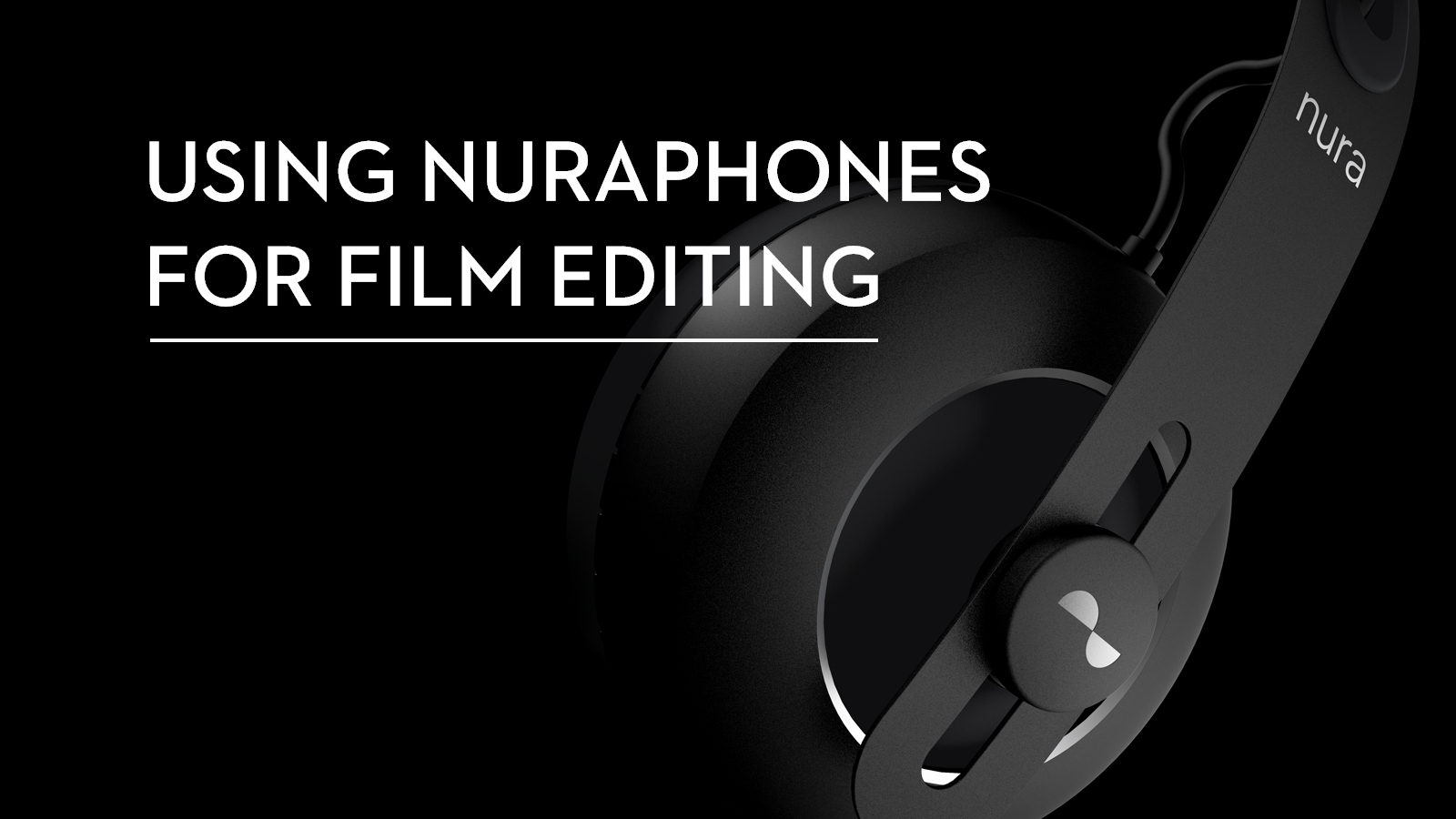
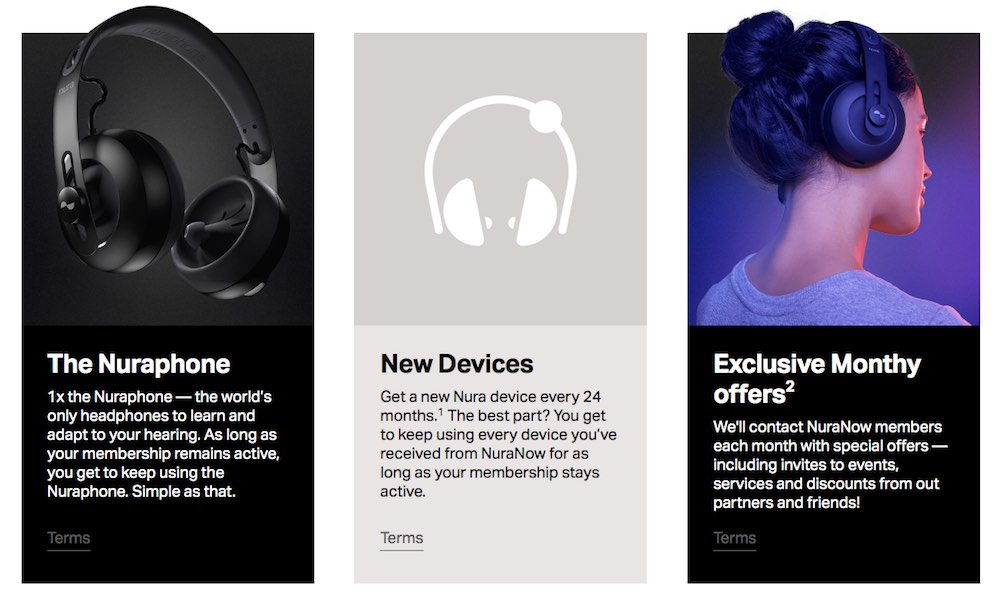
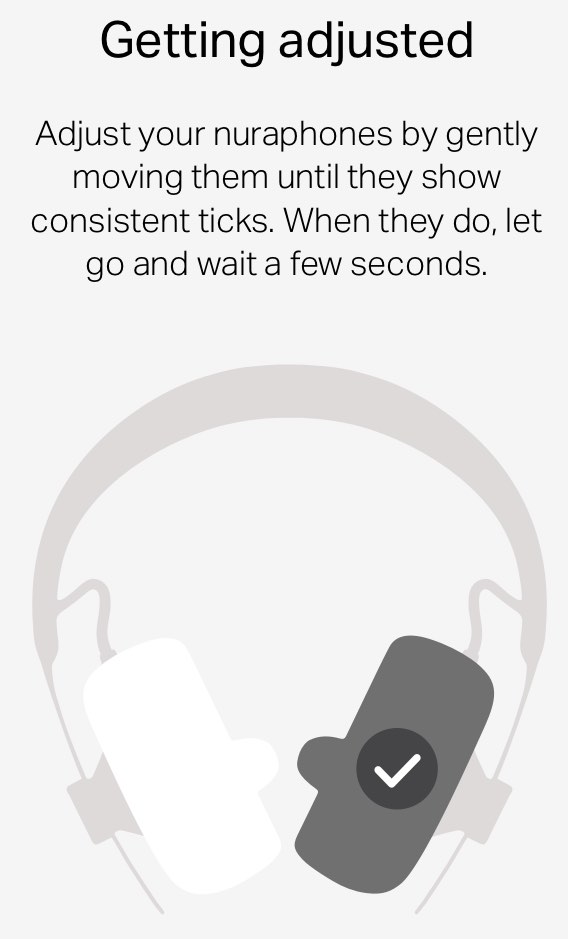
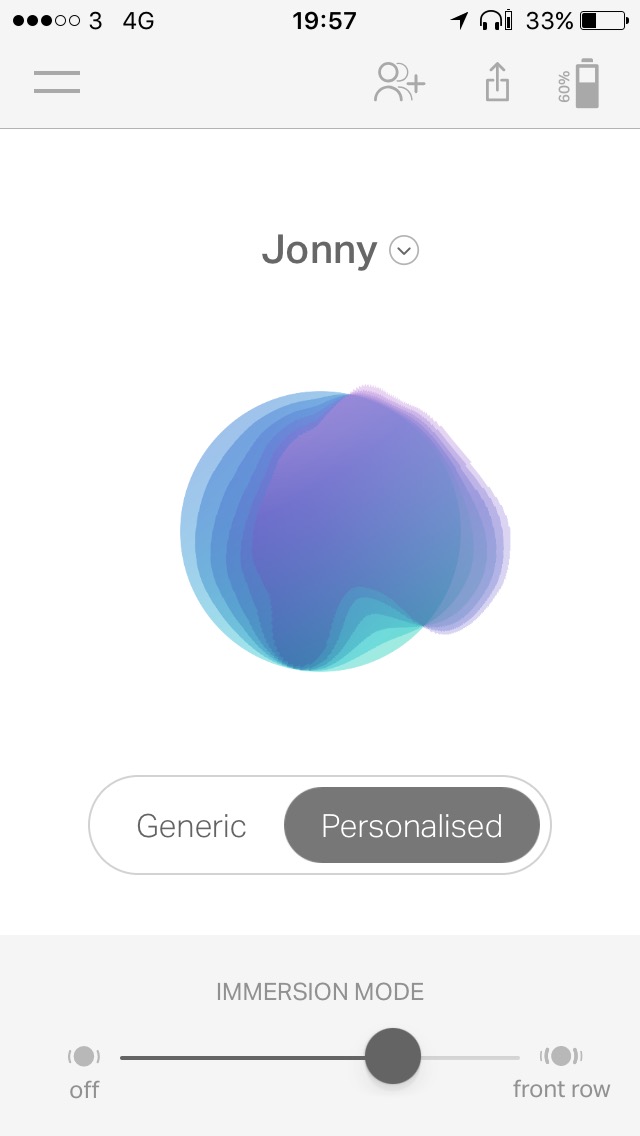
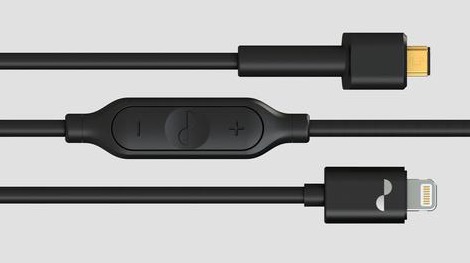
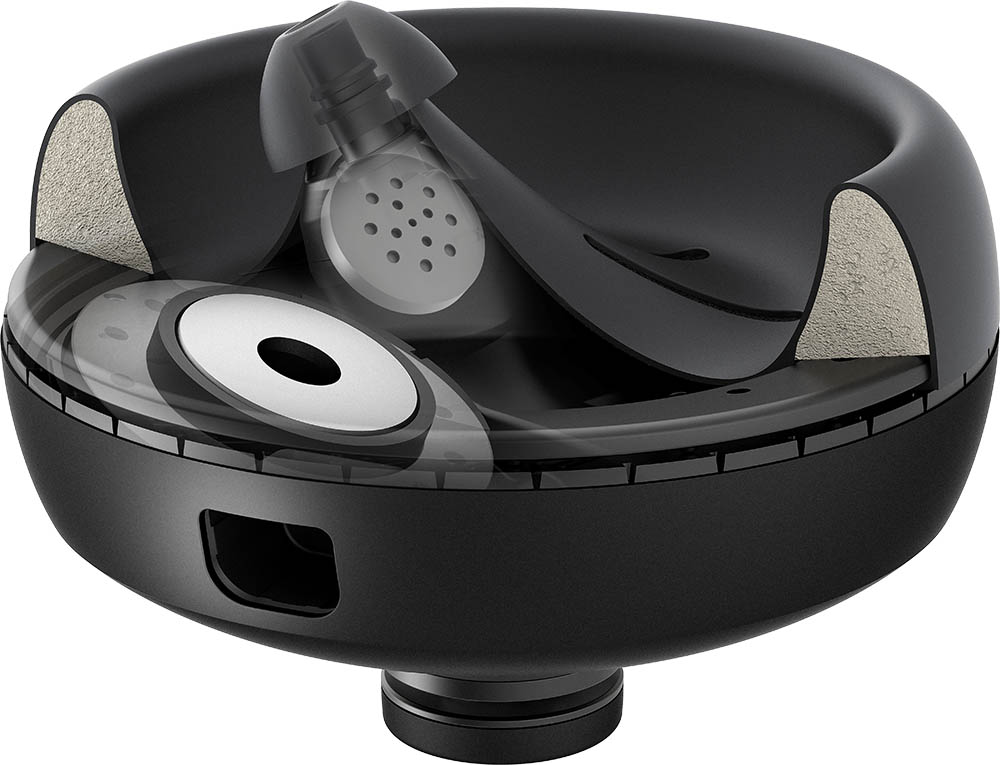
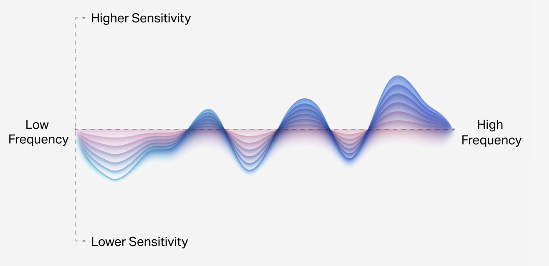
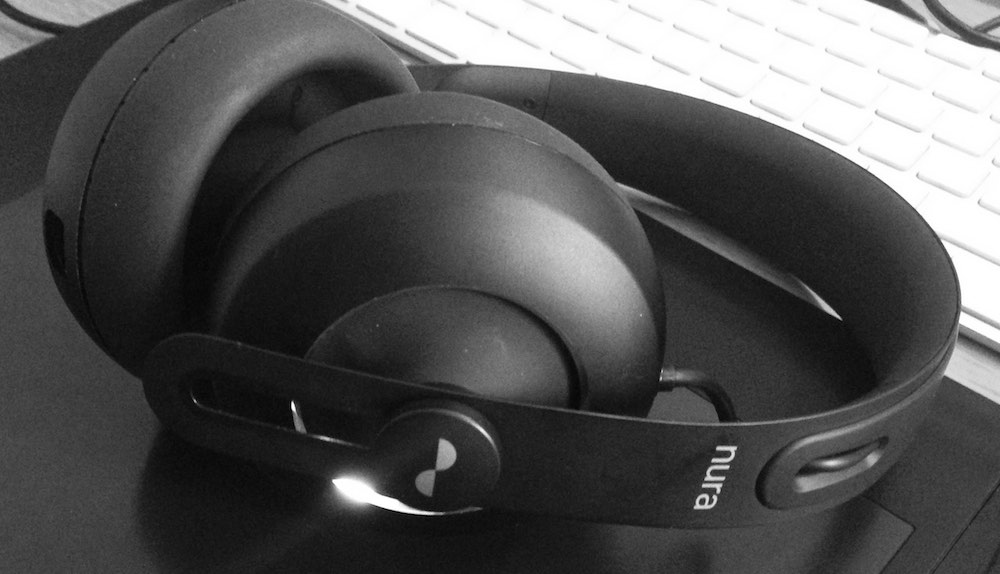
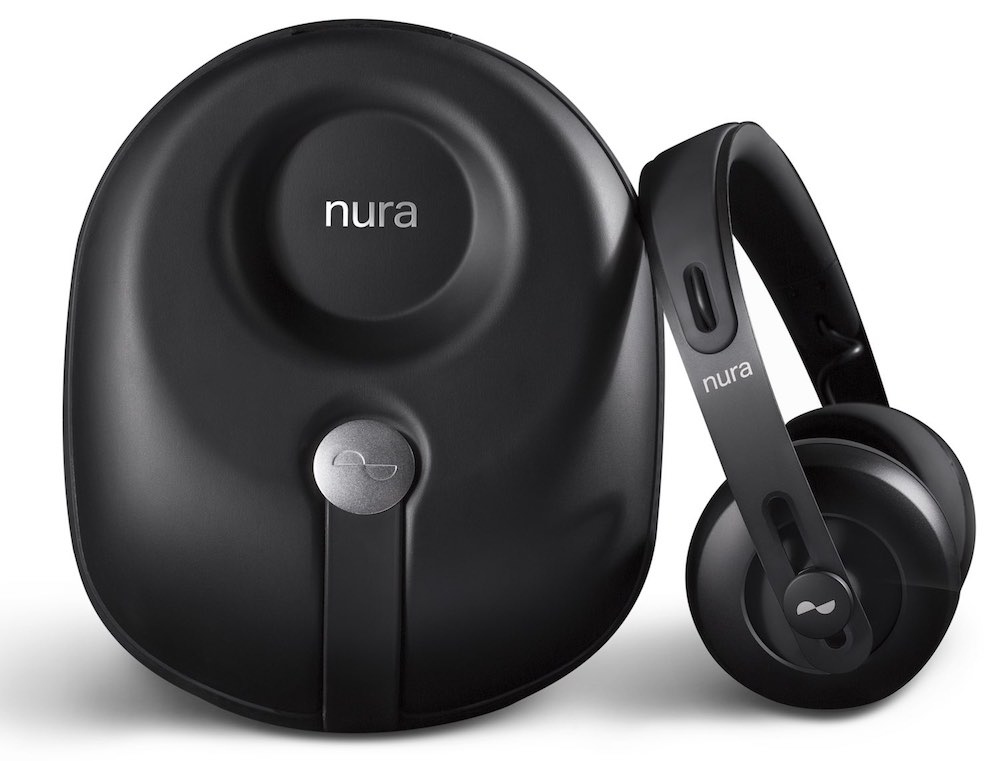


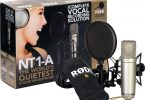

They need a “long press” function for volume up and down.. that’s all I’m asking for. Maybe in next G3 update.?
For the past few months, I’ve been reading all the reviews I could find on Nuraphone, all of them seem to be amazed at the eye-opening sound quality. And, naturally, I’ve been kicking myself in the head for want yet another pair of headphones.
Your discount code made me pull the trigger. Many thanks.
But they’re not exactly cheap for me. SO DAMN YOU!!! (SHAKES FIST IN AIR)
Hope you enjoy them! 🙂